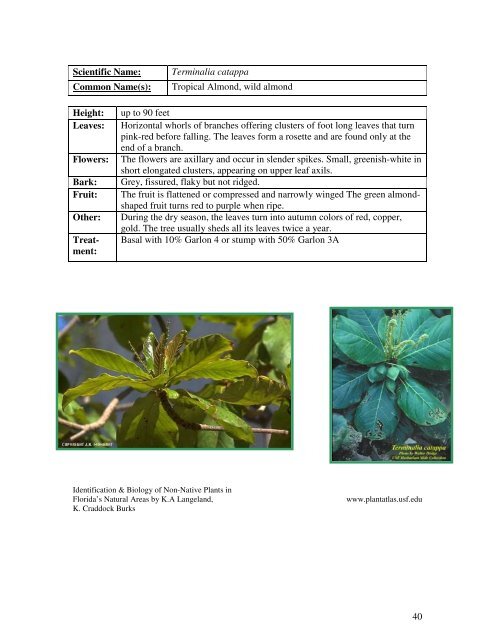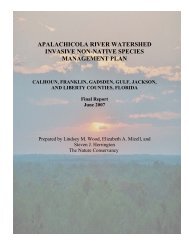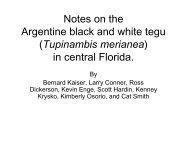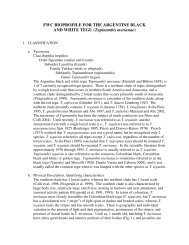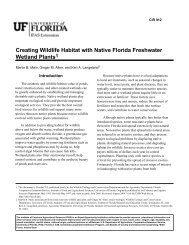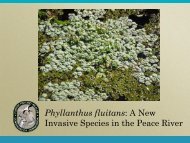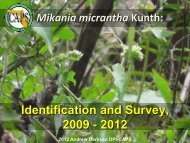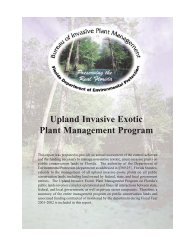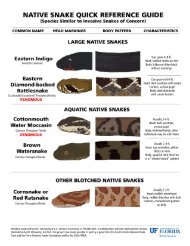Identification Guide For Invasive Exotic Plants of the Florida Keys
Identification Guide For Invasive Exotic Plants of the Florida Keys
Identification Guide For Invasive Exotic Plants of the Florida Keys
Create successful ePaper yourself
Turn your PDF publications into a flip-book with our unique Google optimized e-Paper software.
Scientific Name:<br />
Common Name(s):<br />
Terminalia catappa<br />
Tropical Almond, wild almond<br />
Height:<br />
Leaves:<br />
Flowers:<br />
Bark:<br />
Fruit:<br />
O<strong>the</strong>r:<br />
Treatment:<br />
up to 90 feet<br />
Horizontal whorls <strong>of</strong> branches <strong>of</strong>fering clusters <strong>of</strong> foot long leaves that turn<br />
pink-red before falling. The leaves form a rosette and are found only at <strong>the</strong><br />
end <strong>of</strong> a branch.<br />
The flowers are axillary and occur in slender spikes. Small, greenish-white in<br />
short elongated clusters, appearing on upper leaf axils.<br />
Grey, fissured, flaky but not ridged.<br />
The fruit is flattened or compressed and narrowly winged The green almondshaped<br />
fruit turns red to purple when ripe.<br />
During <strong>the</strong> dry season, <strong>the</strong> leaves turn into autumn colors <strong>of</strong> red, copper,<br />
gold. The tree usually sheds all its leaves twice a year.<br />
Basal with 10% Garlon 4 or stump with 50% Garlon 3A<br />
<strong>Identification</strong> & Biology <strong>of</strong> Non-Native <strong>Plants</strong> in<br />
<strong>Florida</strong>’s Natural Areas by K.A Langeland,<br />
K. Craddock Burks<br />
www.plantatlas.usf.edu<br />
40


